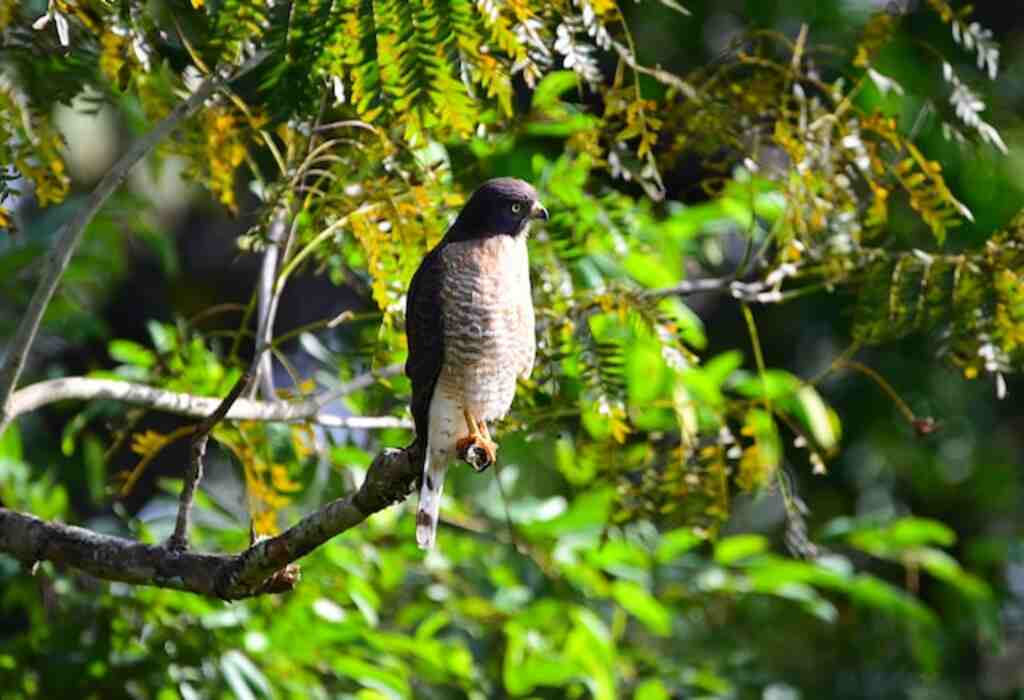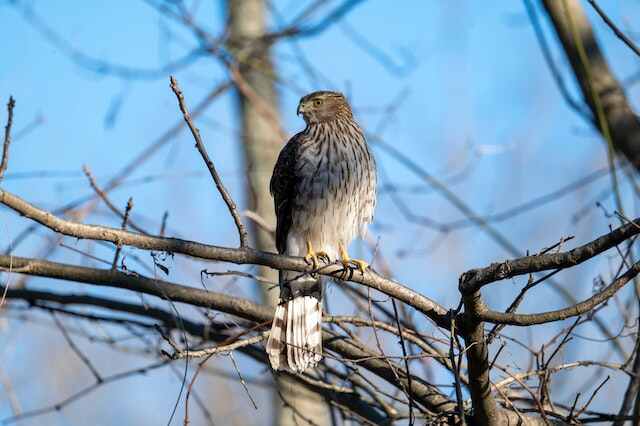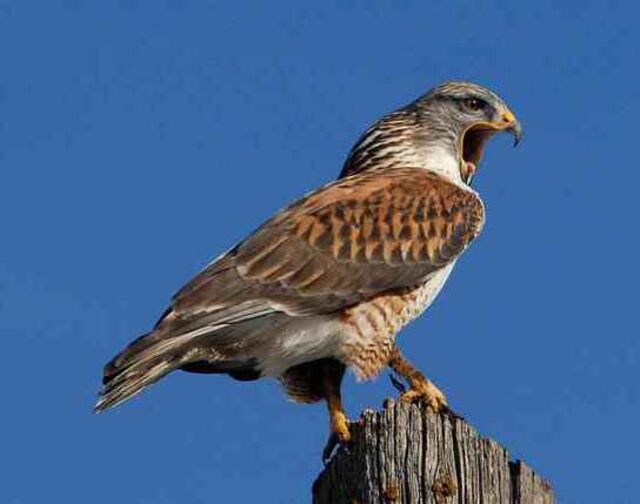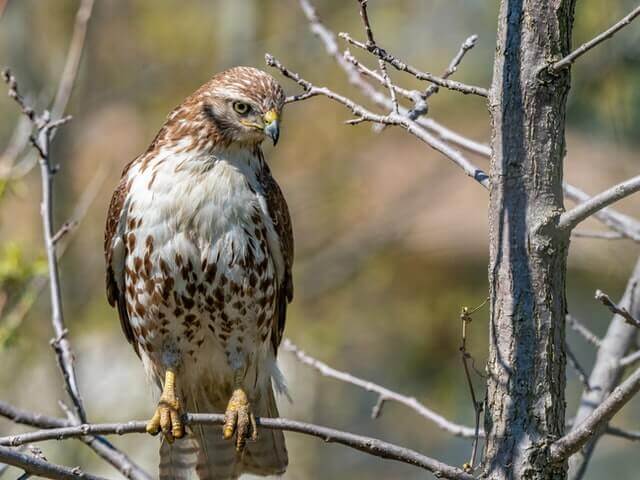Do Hawks Eat Fruit? Unveiling the unexpected secrets of these formidable birds. While hawks are known for their carnivorous nature, the question lingers: do they indulge in fruit?
Join us as we explore the dietary habits of hawks, from their exceptional hunting skills to their surprising encounters with various types of fruit.
Discover the truth about hawks’ fruity cravings, the frequency of their fruit consumption, and the factors that influence their dietary choices.
Let’s uncover the nutritional value of fruit for hawks and its impact on their health. Get ready to embark on a fascinating journey into the world of hawks’ unexpected taste buds!
Table of Contents
- 1 Key Takeaways
- 2 Overview of Hawks’ Diet
- 3 Do Hawks Eat Fruit?
- 4 Types of Fruit Hawks Eat
- 5 Frequency of Fruit Consumption
- 6 Factors that Influence Fruit Consumption
- 7 Nutritional Value of Fruit for Hawks
- 8 Behavioral Patterns of Hawks
- 9 Impact of Fruit Consumption on Hawks’ Health
- 10 Comparison with Other Birds of Prey
- 11 Hawk Conservation
- 12 Frequently Asked Questions
- 13 Conclusion
- 14 Author
Key Takeaways
- Hawks primarily eat meat, but do consume fruit for its water content.
- Different hawk species have varying fruit preferences, which can be influenced by factors such as color, texture, and aroma.
- Excessive fruit consumption can cause weight gain and an imbalance in their diet, but fruit also contains essential vitamins and minerals, aiding digestion and hydration.
- While fruit is not a significant part of their diet, understanding the dietary patterns of birds of prey, such as hawks, is crucial for conservation efforts.
Overview of Hawks’ Diet
The diet of hawks is predominantly composed of small mammals, birds, reptiles, and insects. Hawks are known for their sharp claws and beaks, which allow them to capture and consume their prey with ease.
However, some species of hawks have been observed to eat fruits, although this is not a common occurrence.
In fact, fruit is not a natural part of the hawk’s diet, and it is likely that the birds consume it primarily for its water content.
Additionally, hawks have been known to use fruit as a means of preservation, storing it in their nests to feed on during periods when their preferred prey is scarce.
The fruit-eating habits of different hawk species vary, with some consuming a wider variety of fruits than others.
With this background information on the diet of hawks, it is important to explore the types of fruit that these birds consume.
Do Hawks Eat Fruit?
Hawks are primarily carnivorous birds of prey, but they do eat fruit occasionally. While meat forms the bulk of their diet, certain hawk species incorporate fruits like berries into their meals.
Fruits provide essential nutrients, vitamins, and antioxidants for hawks. However, fruit consumption varies among species and depends on factors such as habitat, availability, and seasonality.
Although not a staple, the inclusion of fruit in a hawk’s diet can contribute to their overall health and well-being.
Types of Fruit Hawks Eat
Various types of succulent and juicy fruits serve as a vital diet for hawks, providing them with essential nutrients for their survival.
Hawks are known to consume a wide variety of fruits, including berries, grapes, apples, pears, and cherries.
However, their fruit preferences may vary depending on their location and the seasonal availability of different fruits.
For example, hawks in the Northern Hemisphere may consume more berries and apples during the summer months, while those in the Southern Hemisphere may prefer grapes and pears during their summer months.
It is important to note that although hawks are primarily known for their carnivorous diet, they do consume fruits as a supplement to their diet.
In the subsequent section, we will explore the frequency of fruit consumption by hawks.
Frequency of Fruit Consumption
Fruit consumption by hawks varies depending on factors such as location and seasonal availability. While hawks are primarily carnivorous, certain species of hawks have been known to incorporate fruits into their diets.
The benefits of fruit for hawks include providing essential vitamins and minerals, aiding in digestion, and acting as a source of hydration.
However, the impact of climate on fruit availability for hawks can greatly affect their consumption patterns.
For example, in areas with prolonged droughts, fruit may become scarce, causing hawks to rely solely on their carnivorous diet.
Conversely, in regions with abundant fruit trees, hawks may consume fruit more frequently.
Understanding the frequency of fruit consumption in hawks is important for conservation efforts and wildlife management.
Factors such as climate, location, and seasonal availability all play a role in determining the amount of fruit consumed by hawks.
Factors that Influence Fruit Consumption
Factors such as climate, location, and seasonal availability play a crucial role in determining the extent to which hawks incorporate fruits into their diets. Hawks, like other birds, have varying fruit preferences that are influenced by their living conditions.
For instance, hawks residing in tropical regions with abundant fruit trees are more likely to consume fruits than those living in arid regions with limited fruit availability.
Additionally, the type of fruit and its ripeness may also affect the birds’ preference. Some of the factors affecting fruit preference in hawks include color, texture, and aroma.
Furthermore, hawks’ fruit consumption habits can be compared to those of other birds.
For example, while some species of birds solely rely on fruits, others such as raptors, including hawks, tend to consume fruits only occasionally.
Overall, factors such as climate, location, and fruit availability influence hawks’ fruit consumption habits. Understanding these factors is crucial in determining the nutritional value of fruits for hawks.
Nutritional Value of Fruit for Hawks
The nutritional value of fruit for hawks can be discussed in terms of key nutrients such as vitamins and minerals, carbohydrates, and fiber.
Vitamins and minerals play a crucial role in maintaining the physiological functions of hawks, while carbohydrates and fiber provide the necessary energy and digestive support.
Understanding the nutritional composition of fruits can help in designing a balanced diet for hawks in captivity or in the wild.
Vitamins and Minerals
Nutritionists recommend a balanced diet that includes a variety of vitamins and minerals to support a healthy body.
Fruit is an important source of these essential nutrients for hawks, as it contains a range of vitamins such as vitamin C and vitamin A, as well as minerals like potassium and magnesium.
These nutrients are important for maintaining good health, supporting healthy vision, and helping to boost the immune system.
However, it is important to note that excessive fruit consumption can also pose potential risks for hawks, including weight gain and an imbalance in their overall diet.
Therefore, it is important to ensure that fruit is consumed in moderation and as part of a balanced diet.
In the subsequent section about ‘carbohydrates and fiber’, we will explore how these nutrients also play a role in a hawk’s diet.
Carbohydrates and Fiber
After discussing the importance of vitamins and minerals in a hawk’s diet, the focus now shifts to carbohydrates and fiber.
Carbohydrates serve as the primary source of energy for hawks, providing the necessary fuel for their daily activities such as hunting and flying.
On the other hand, fiber plays a crucial role in maintaining the digestive health of these birds.
As shown in the table below, fiber helps promote the growth of beneficial bacteria in the gut, which aids in the breakdown of food particles and absorption of nutrients.
Additionally, fiber can also regulate the bowel movements of hawks, preventing constipation and other digestive problems.
Overall, the benefits of fiber and the role of carbohydrates in hawks’ diet highlight the importance of a balanced and varied diet for these birds of prey.
Moving forward, understanding the behavioral patterns of hawks can provide more insights into their dietary needs and preferences.
| Benefits of Fiber | Role in Hawk’s Diet |
|---|---|
| Promotes gut health | Primary source of energy |
| Aids in nutrient absorption | Facilitates daily activities |
| Regulates bowel movements | Helps maintain a balanced diet |
| Promotes growth of beneficial bacteria | Prevents digestive problems |
Transitioning into the next subtopic, it is essential to consider the behavioral patterns of hawks to better understand their dietary habits.
Behavioral Patterns of Hawks
In the wild, hawks are known for their aerial hunting skills, swooping down from the sky to capture prey with their sharp talons like a skilled archer releasing an arrow from a bow.
Hawks have a varied diet, and their hunting techniques are adapted to suit their prey. They are known to hunt small mammals, birds, and reptiles.
Hawks are also known to exhibit interesting nesting behavior, with some species building their nests in trees and others on cliffs.
While hawks are primarily carnivorous, there have been some observations of hawks eating fruit. However, the behavioral patterns of hawks suggest that fruit consumption is not a regular part of their diets.
Ultimately, the impact of fruit consumption on hawks’ health is an area that requires further research.
Impact of Fruit Consumption on Hawks’ Health
The impact of fruit consumption on hawks’ health is an important topic to consider as it has significant implications for their overall well-being.
One key factor to examine is the effects of fruit on their digestive system, including the ability to break down and absorb nutrients efficiently.
Another important aspect to consider is how fruit consumption may affect their weight management, as hawks need to maintain a healthy weight to function optimally.
Additionally, the potential impact of fruit consumption on their immune system and overall health is an area that warrants further investigation.
Digestive System
The digestive system of hawks is specialized for a carnivorous diet, with a short digestive tract and powerful stomach muscles to efficiently break down and process meat.
This adaptation allows hawks to extract maximum protein and nutrients from their prey, enabling them to maintain their energy levels and muscle mass.
In contrast, fruit-eating animals have longer digestive tracts and weaker stomach muscles, as fruit is easier to digest and does not require as much processing.
The short digestive tract of hawks enables them to quickly digest their prey, which is important for their survival in the wild.
However, this also means that hawks are not well adapted to digesting fruit, as it requires a longer digestive process.
Therefore, while hawks may eat fruit occasionally, it is not a significant part of their diet and may not provide them with all the necessary nutrients.
This highlights the importance of understanding the dietary habits and digestive adaptations of different animals for effective weight management and overall health.
Weight Management
Efficient and effective weight management is essential for optimal health and fitness in hawks, who rely on their specialized digestive system to extract maximum nutrients from their prey.
Exercise benefits play a crucial role in maintaining a healthy weight by burning off excess calories and building muscle mass, which also contributes to increased metabolism.
Additionally, portion control is equally important for maintaining a healthy weight, as overeating can lead to obesity and its associated health risks.
By regulating their food intake and engaging in regular exercise, hawks can maintain a healthy weight and optimize their hunting abilities.
Moving on to the immune system, it is equally important for hawks to maintain a strong immune system to ward off diseases and infections.
Immune System
Maintaining a strong immune system is crucial for hawks to prevent diseases and infections and ensure optimal health and fitness.
Hawks can benefit greatly from exercise, which can help improve their immune response by increasing the production of white blood cells, reducing inflammation, and enhancing their ability to fight off infections.
Additionally, stress can have a significant impact on the immune system of hawks, with chronic stress leading to a weakened immune system and increased susceptibility to diseases.
To counteract this, hawks may engage in stress-reducing activities such as grooming, sunbathing, and resting.
Proper nutrition is also essential for maintaining a healthy immune system, as certain vitamins and minerals can boost immune function.
Overall, hawks must prioritize their immune system to ensure their survival and well-being in the wild.
As we move forward to the next section about the comparison with other birds of prey, it is important to note that each species has unique immune system adaptations that allow them to thrive in their respective environments.
Comparison with Other Birds of Prey
In comparison to other birds of prey, hawks have been observed to exhibit a more varied diet that includes not only small mammals but also birds, reptiles, and even insects.
While eagles primarily hunt fish and mammals, hawks are known for their ability to adapt to different environments and food sources.
Some species of hawks, such as the red-tailed hawk, have been observed eating fruit as well. However, this is not a common behavior among hawks, as their diet mainly consists of animal prey.
It is interesting to note that different bird species have varying fruit eating habits, with some like the cedar waxwing and the northern mockingbird specializing in fruits.
Understanding the dietary patterns of birds of prey is crucial in their conservation efforts as it helps identify the threats they face, and the measures needed to protect them.
With this in mind, it is important to explore the conservation of hawks and their habitats.
Hawk Conservation
Conservation efforts for hawks and their habitats are essential to ensure the continued survival of these avian predators.
Hawks, like other birds of prey, play an important role in the ecosystem by regulating populations of prey animals.
Unfortunately, many hawk species are threatened by habitat loss, fragmentation, and degradation caused by human activities.
To address this issue, conservationists have focused on restoring and protecting hawk habitats through measures such as habitat restoration, land-use planning, and community engagement.
Habitat restoration involves restoring degraded or destroyed habitats to their natural state, while land-use planning aims to balance the needs of humans and wildlife by identifying areas that are important for conservation.
Community engagement is also essential for successful hawk conservation, as it involves working with local communities to promote awareness and understanding of the importance of hawks and their habitats.
By implementing these measures, we can help ensure that hawks continue to thrive in the wild and maintain their vital role in the ecosystem.
| Conservation Strategies | Advantages | Disadvantages |
|---|---|---|
| Habitat Restoration | Restores natural habitats | Costly, time-consuming |
| Land-use Planning | Balances human and wildlife needs | Limited effectiveness |
| Community Engagement | Increases awareness and understanding | Difficult to achieve widespread participation |
Frequently Asked Questions
What is the average lifespan of a hawk?
The average lifespan of a hawk varies based on species and environmental factors. Factors affecting lifespan include breeding habits and habitat preferences. A scientific, precise, and detailed analysis is necessary to understand the complex nature of hawk lifespan.
Do hawks migrate during certain seasons?
Hawks exhibit seasonal patterns of migration, with some species migrating thousands of miles. They follow specific migration routes, which may vary depending on the time of year. This behavior is driven by various factors, including climate and food availability.
How do hawks hunt for prey?
Hawks use various hunting techniques depending on their size and food preferences. They may soar and scan the ground for prey, ambush from a perch, or chase after prey in flight. Their sharp vision and talons aid in catching and killing prey swiftly.
Are there any species of fruit that are toxic to hawks?
Although hawks primarily consume meat, they do occasionally eat fruits. However, certain fruits such as avocado, cherries, grapes, and raisins can be toxic to them due to their high oxalate levels. It is important for hawks to consume a balanced diet to avoid any potential harm from toxic fruits.
How do hawks interact with other birds in their ecosystem?
Hawks interact with other birds in their ecosystem through various forms of bird communication and predator-prey dynamics. They may compete for resources or hunt smaller birds, but also serve as important predators to maintain balance in the ecosystem.
Conclusion
Hawks are predators that primarily feed on small animals such as rodents, insects, and reptiles. However, they also consume fruit, particularly during certain times of the year when their preferred prey is scarce.
The types of fruit hawks eat vary depending on their habitat and the availability of food sources.
While fruit consumption may not be a significant portion of their diet, it is still an important source of nutrients for these birds of prey.
Factors that influence fruit consumption by hawks include their location, the season, and their individual preferences.
Hawks living in areas with abundant fruit trees are more likely to incorporate fruit into their diet.
Additionally, during the breeding season, hawks may consume more fruit as they require additional nutrients for egg production and rearing their young.
While fruit may not provide the same level of protein and fat as their preferred prey, it does offer essential vitamins and minerals that are important for the hawk’s overall health.
However, excessive consumption of fruit can lead to health issues such as obesity and malnutrition. Therefore, it is crucial for hawks to maintain a balanced diet that includes a variety of food sources.
A real-life case study of a red-tailed hawk in California provides an example of the importance of fruit in a hawk’s diet.
The hawk was observed consuming large amounts of blackberries during the summer months when their preferred prey, ground squirrels, were not readily available.
This behavior allowed the hawk to maintain a healthy diet and survive during a period of food scarcity.
Overall, while fruit consumption may not be a significant portion of a hawk’s diet, it is still an important factor in their overall health and survival.








